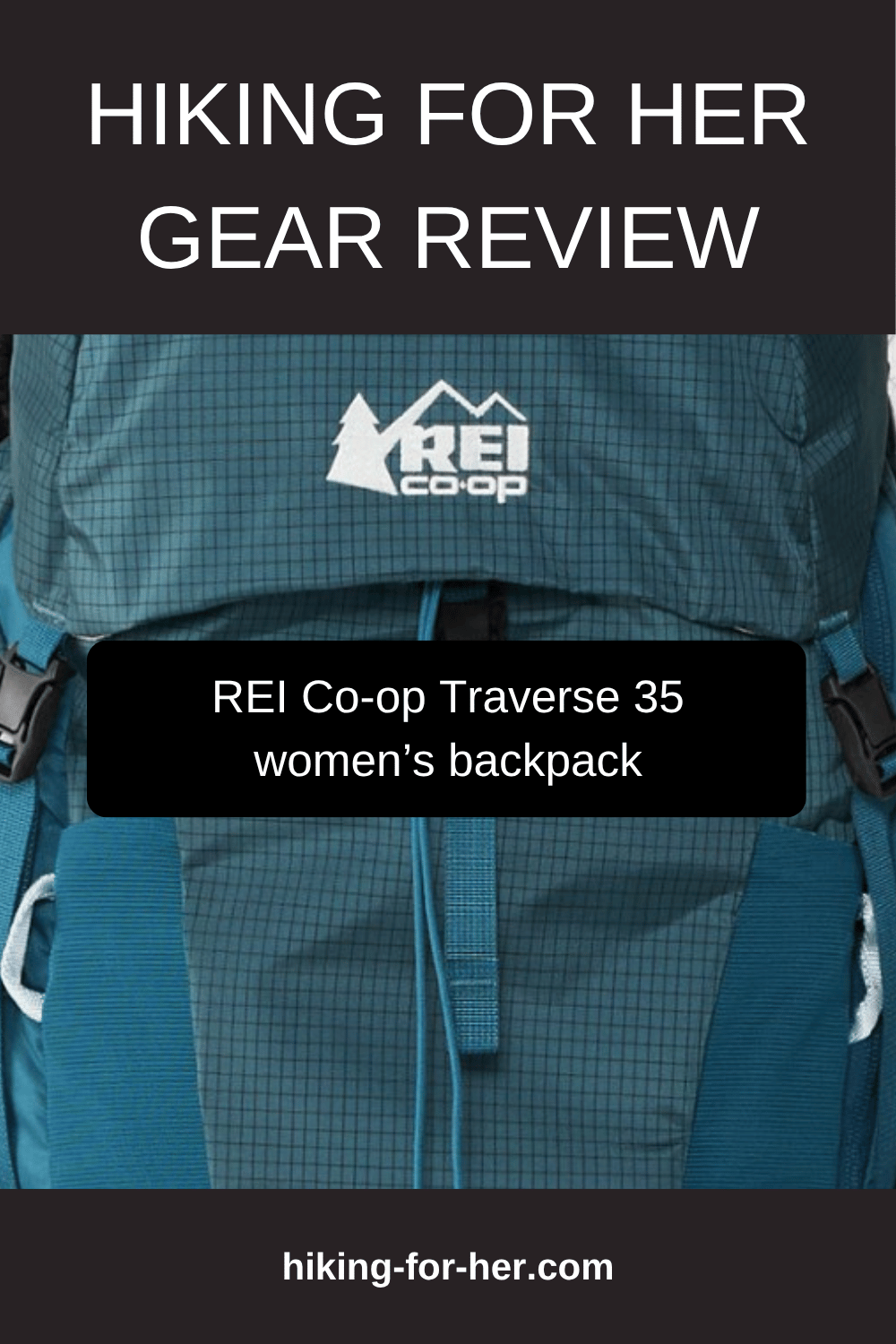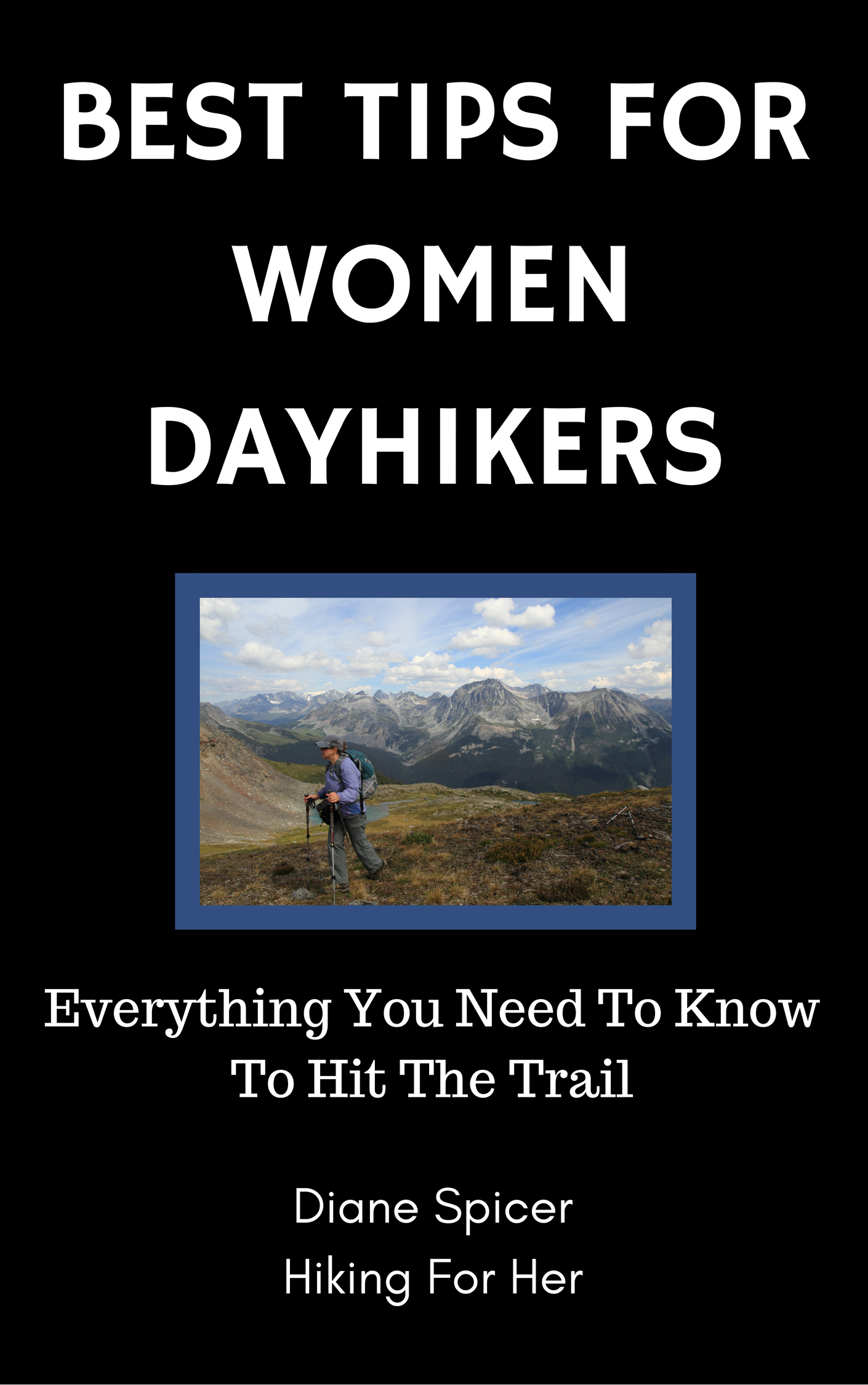
REI womens Traverse 35 backpack review:
the details you need
before you make a new backpack purchase
By Diane Spicer
Coming right up, the REI womens Traverse 35 backpack review written for female day hikers.
Why day hiking?
Because this is a small pack, 35L, which places it at the very low end for backpacking.
- Unless you practice the art form known as ultralight hiking, it's probably not enough volume to schlep your clothing, sleep system, safety gear, backpacking kitchen and food.
But nothing wrong with day hikes, right? Sometimes your schedule won't allow days away for backpacking trips.
So let's take a (day)hike with this pack, what do you say?
But before we head out...
Disclosures in this REI womens Traverse 35 backpack review
Hiking For Her received a Traverse 35 backpack so a thorough field test could be done before writing this unpaid review.
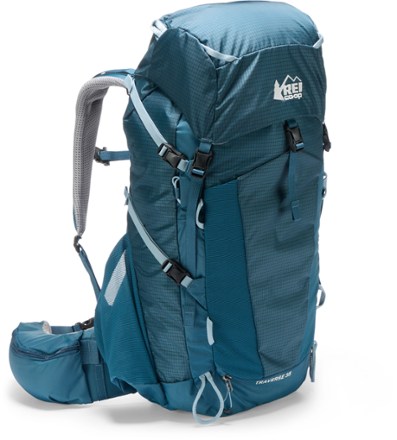 REI Co-op Traverse 35 Pack REI Co-op Traverse 35 Pack
|
HFH is an REI affiliate. This means if you purchase a backpack through the links on this website you don't pay anything extra. But you do send a small commission to the Hiking For Her coffers. You've probably noticed this website it ad free, and all of the reviews are unpaid. Your generosity allows more hiking recommendations and expert hiking advice to flow freely around the world. |
What are the technical specifications for this day pack?
It's good to understand exactly what this backpack delivers for the money.
- Gear capacity = 35L (2,136 cubic inches)
- Weight varies with size; maximum is 3 pounds 7 ounces
- Internal perimeter frame
- Hydration reservoir–compatible (3L) with tube holder on shoulder strap (reservoir not included)
- Shell: 210-denier ripstop nylon and 400-denier recycled nylon (bluesign® approved*)
- Lining: 200-denier recycled polyester (bluesign® approved)
- Raincover: 70-denier recycled nylon (all bluesign® approved)
- Durable water repellent (DWR) materials
*What's this? bluesign® approved indicates the materials used in this backpack meet specific criteria along the entire supply chain. Environmental, health and safety issues are considered to prevent harmful chemicals from being used. See more on bluesign from REI.
Is this a comfortable backpack for day hikes?
I found it to be extremely comfortable, once I had adjusted the backpack to fit my body (see below for your options).
The hip belt is well padded with dual-density foam. The belt is adjustable within a wide range to accommodate my clothing layering system without compromising comfort.
The shoulder straps are well padded as well, something that a day pack often gets wrong.
The internal frame did a great job of supporting my heavier-than-average load (I hike with a survival gear kit as well as a first aid kit, always carry extra water, plus a hearty lunch and plenty of snacks).
The narrow profile didn't overwhelm my petite frame. It will be a good pack to wear when hiking offtrail through brush or in tight rock outcrops.
Is this 35 liter day pack adjustable?
This is an important question in this REI womens Traverse 35 backpack review.
Only a newbie hiker in a hurry will just pull on a backpack and hit the trail.
Adjustments need to be made so the load inside the pack is evenly distributed. That changes for each and every hike.
Chafing from the hip belt or shoulder straps can be avoided with some adjustments.
The torso length of the backpack can be modified after purchase if you select the right pack.
So let's examine how adjustable this Traverse backpack really is, with some tips on how to make the right adjustments for your body type.
Choose the right size for your hips
Extended sizing is available to fit your waist and hips.
Be sure to choose the size appropriate to you:
- XS-S Hip: 28-38 inches
- M-XL Hip: 35-47 inches
- 1X-4X Hip: 44-58 inches
Two things to note here.
You must measure your hips (body circumference) at the iliac crest, which are the bony areas you feel when you rest your hands on your hips.
Consider how much layering you will be doing while wearing this backpack. You don't want a hip belt that has a death grip on you, but you don't want a belt that doesn't tighten down enough.
In my case, I went up a size in order to have more length on the hip belt. Why? Because I'm a cold hiker who likes to wear at least one midlayer except on an exceptionally hot midsummer day.
And on that hot day, I want to be able to cinch down the belt so the backpack doesn't flop around on my torso.
How to adjust torso length
The Traverse backpack gives you continuous torso adjustability, from 16 to 18 inches for the torso length.
Two reasons why that is an important feature on a women's backpack:
- Getting the initial fit just right for comfortable hiking
- Making the backpack loanable to a friend or family member
It's easy to adjust the torso length with the sliding back panel.
Because you have a 3 inch range to work with, it's highly likely that you will find the sweet spot right away.
More backpack adjustments any hiker should make before a hike
Pay attention to every strap on your backpack, because that's where you dial in your fit.
The thin chest (sternum) strap is adjustable in both length and position to accommodate more or less clothing.
It allows you to secure the backpack on your upper chest without binding or pressure, so don't forget to adjust it each time you put on the backpack.
- Note how delicate this feature is, and treat it with a gentle touch. There is no way to adjust the slider and piping. If it pops off you can get it back on, but who wants to fiddle with it during a hike?
On this pack there are side compression straps. You will use these every time you load your backpack, because they adjust to the size and shape of your gear.
This gives you good balance, especially important to you on steep trails or during a rockhop stream crossing.
How easy is it to get into this backpack?
An important part of this REI womens Traverse 35
backpack review, for these reasons
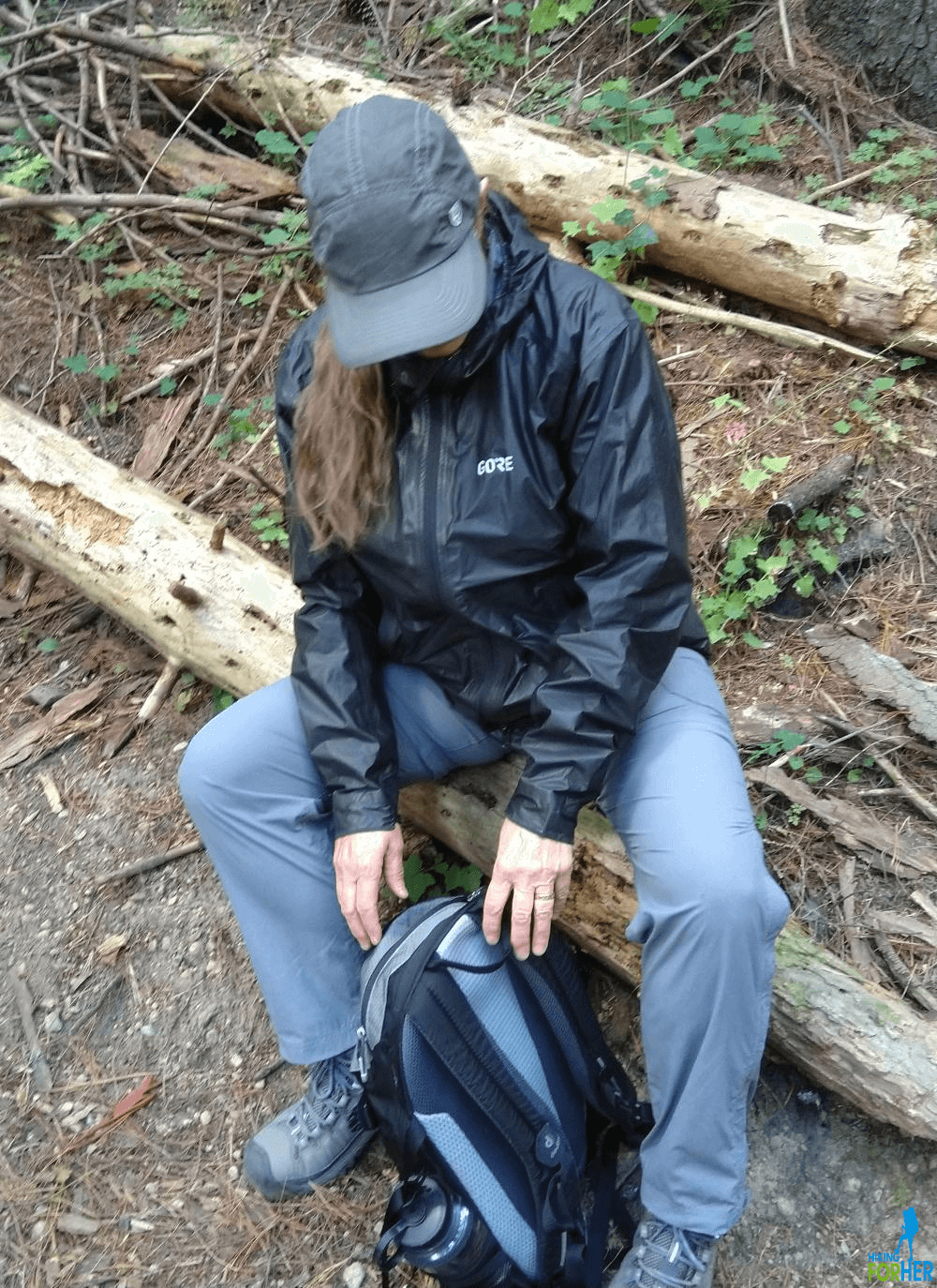 Do you say Ugh or Easy Peasy when it's time to fish out something from the depths of your pack?
Do you say Ugh or Easy Peasy when it's time to fish out something from the depths of your pack?For me, answering this question is almost as important as asking how adjustable a backpack may be.
On this 35L pack, you have one large compartment that you access by a floating top lid. This is where your big bulky gear goes, and it's easy enough to get at it once you release a cinch cord.
This cord also closes up the compartment, keeping everything in place when you bend over.
Adjusting the cord is done easily once you figure out where to press.
The front panel J-zipper gives you full access to the main body.
If you like to store gear on the outside of your pack, you'll love the big front stuff pocket. I didn't think I'd use it much, but I ended up storing my jacket and gloves there when the day warmed up.
It's large enough to hold lots more.
What I liked most in this REI womens Traverse 35
backpack review
A few fiddly details I'd rather change
It's great that a water repellent fitted raincover is included with this backpack. That's pretty standard, and avoids extra costs or time to find the right cover.
What I'm not crazy about is where the raincover is stored.
It fits in its own large pocket under the top lid. That seems to me to be a place I'd rather put a bulky jacket, paper maps, trail journal or snacks - under cover, away from the elements.
If the raincover were stashed in a small pocket behind the main compartment and accessed from the bottom of the backpack, I'd be happier to use that precious up top space as noted.
Two features I rarely use, the trekking pole keepers and the ice axe loop, I could live without. Sometimes I do use them as unconventional attachment points, though, so what the heck, roll with 'em.
Conclusions in this REI womens Traverse 35
backpack review: final thoughts
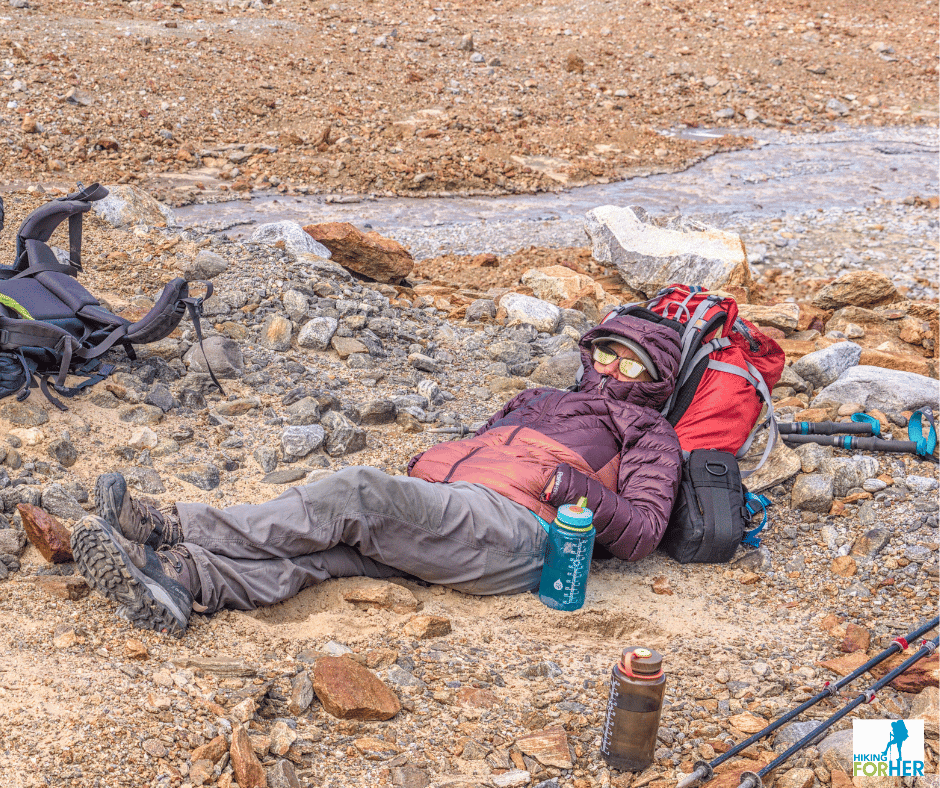 Yes, sometimes I do get a little lazy
Yes, sometimes I do get a little lazyI would be a lazy hiking gear reviewer if I did not point out the benefits of being a member of the REI Co-op.
Here's the (good for you) deal:
You spend money on hiking gear and outdoor clothing throughout the year (as one does).
The next year in the spring you get somewhere near 10% of eligible purchases back to use on gear.
And the cycle of updating your gear list continues.
On this backpack, that puts over $16US into your hiking budget.
After using the Traverse for spring through fall day hiking, I'm ready to commit to using it for all my routine day hikes for the coming year.
- I've used Osprey and Deuter packs in the past, but I'm ready to make the switch.
For a small backpack at a decent price it delivers a lot of adjustments, comfort and easy access to my gear.
It's rugged and has some features that surprised me for the price point (well padded shoulder straps and hip belt, for example).
It can definitely be used beyond day hiking, for short backpacking trips, without compromising comfort under load, something I'm eager to test.
- Or upgrade to the Traverse 60 to give you the room you need for backpacking gear. You have 4 torso and hip sizes to choose from.
You could also press this pack into service as a carry on when you need a lot of room with easy access to small items.
Please give this backpack a close look to see if it's going to do the job for you, too.
P.S. If you're looking for a gift for a newbie hiker, this backpack would put a big grin on her face!
Thanks for reading this REI womens Traverse 35 backpack review
Home page > Best Hiking Gear Reviews >
REI Womens Traverse 35 Backpack Review
|
I get emails all the time about what I wear, eat, carry and love to use on the trail. That's
why I provide affiliate links to you: the best gear that I use myself and have seen used by other hikers is instantly
available for your consideration, and the gear company sends a few
pennies per dollar to this reader-supported hiking website. There is no added cost to you! Everyone ends up a winner: Great gear for you, strong gear companies, and more free hiking tips for everyone. Thanks very much for your support. It's warmly and sincerely appreciated. It also helps send these hiking tips to all your virtual trail buddies around the globe. |
 |

